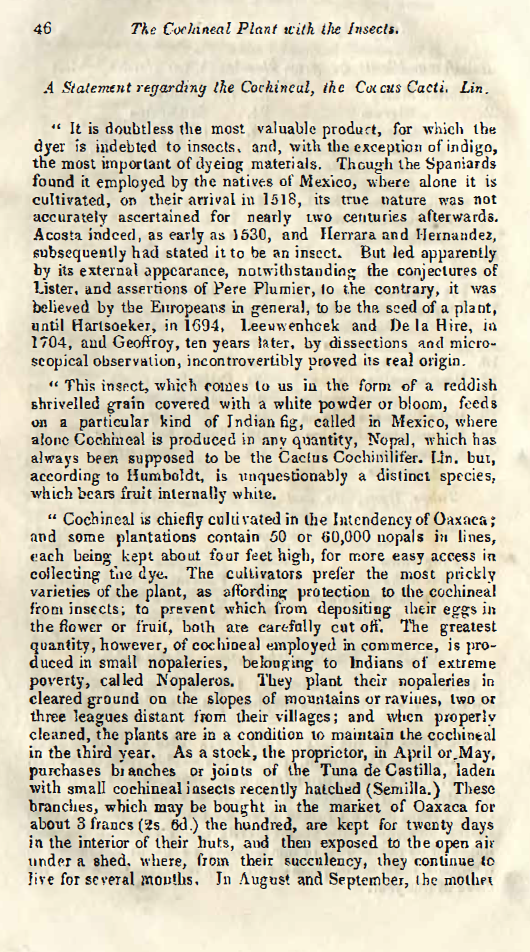A statement regarding the Cochineal, the Coccus Cacti. Lin.
DOI:
https://doi.org/10.21504/saqj.15.2599Keywords:
Cochineal insect, Cactus coccinilifer, Nopal cactus, Oaxaca, Natural dye, Entomology, Colonial botany, Humboldt, Mexico, Dye industry, Trade history, 19th-Century ScienceAbstract
This article presents a detailed historical and scientific account of the cochineal insect (Dactylopius coccus) and its host plant, the Nopal or Indian fig (Cactus coccinilifer Lin.). Dr. C. F. H. Von Ludwig traces the evolution of European understanding of cochineal—from its initial misidentification as a plant seed to its eventual recognition as an insect through the work of naturalists such as Hartsoeker, Leuwenhoek, and Geoffroy in the late seventeenth century.
The study describes the cultivation practices of cochineal in Mexico, particularly in the Intendancy of Oaxaca, where both large plantations and small indigenous “nopaleries” sustain the industry. Von Ludwig details the life cycle of the insect, the environmental conditions required for its propagation, and the meticulous labour—largely undertaken by indigenous women—needed to harvest and prepare the insects for dye production. The article also examines the various methods of killing and drying the insects, noting their influence on colour quality and commercial value.
In highlighting the immense economic importance of cochineal—second only to indigo among natural dyes—Von Ludwig underscores the global trade networks it supported and the colonial ambitions it inspired. The piece concludes with reflections on the East India Company's efforts to introduce cochineal cultivation to India and other colonies, demonstrating the intersection of science, commerce, and imperial enterprise in the spread of this valuable natural product.
Downloads

